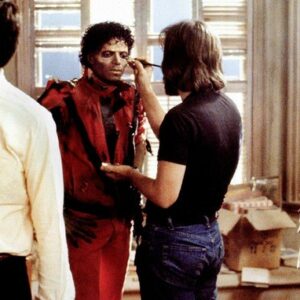In the world of music, the spotlight often shines brightest on the performer, leaving the intricate web of behind-the-scenes professionals in the shadows. Yet, for an artist like Pink, known for her powerhouse vocals and larger-than-life performances, a team of dedicated and highly skilled individuals is responsible for ensuring that every note she sings reaches the audience exactly as intended. At the helm of this behind-the-scenes effort is Pink’s sound engineer—an unsung hero who plays a critical role in shaping her sonic landscape, both in the studio and on stage. This article explores the life, work, and impact of Pink’s sound engineer, revealing the importance of this craft in bringing her music to life.
Introduction to Pink’s Sound Engineer
Pink’s sound engineer, while rarely in the public eye, is a central figure in her performances and recordings. This individual is tasked with capturing and enhancing the raw power of Pink’s voice and ensuring that the sound delivered to audiences—whether in an intimate venue or a massive stadium—is as flawless as it is emotive. With years of experience in the music industry, Pink’s sound engineer has honed their craft in both live performances and studio environments, navigating the delicate balance between technical precision and artistic expression.
Having worked with Pink for an extended period, this engineer understands her unique sound, her vision for each song, and how she wants her music to resonate with her audience. Their role is more than just technical; it is an art form in itself, requiring an ear for nuance and a deep understanding of Pink’s musical identity. From the energy of a live concert to the precision of a studio recording, Pink’s sound engineer is instrumental in every aspect of her audio production.
The Role of a Sound Engineer
The role of a sound engineer, particularly in the high-stakes world of live music, is multi-faceted and deeply complex. At its core, sound engineering is about balancing audio in a way that ensures clarity, power, and emotional impact. This involves fine-tuning vocals, instruments, and backing tracks to create a seamless blend that conveys the artist’s intended message.
In Pink’s case, this means delivering her raw, gravelly vocal style with perfect clarity, whether she is belting out a high-energy anthem or delivering a soft, heartfelt ballad. During live shows, the sound engineer is responsible for managing microphones, speakers, and instruments, ensuring that the audience hears each element of the performance in perfect harmony. They must account for the acoustics of each venue—whether it’s an indoor concert hall or an outdoor festival stage—and adjust settings in real-time to accommodate shifting dynamics and potential issues like feedback or environmental noise.
Live sound engineering is, in many ways, an invisible performance happening in parallel with the artist on stage. The sound engineer must anticipate potential problems before they arise, often making split-second adjustments to avoid any disruptions. For Pink, who is known for her acrobatic performances and dynamic range, this can involve managing everything from her wireless headset mic to the way her voice interacts with different instruments, all while ensuring that the audience experiences her music as she intended.
Challenges of Live Sound Engineering
While studio work offers a controlled environment, live sound engineering is a different beast altogether, filled with unpredictable challenges. Each venue presents its own unique acoustical properties, and the sound engineer must adapt to these variations on the fly. From large arenas with echoing reverb to intimate theaters with tight, focused acoustics, the sound engineer’s role is to ensure that the music sounds consistent and powerful regardless of the setting.
Outdoor venues, in particular, present significant challenges. Wind, weather, and the natural acoustics of open spaces can drastically alter the way sound travels, often requiring real-time adjustments to maintain balance. For Pink’s sound engineer, these challenges are compounded by the complexity of her live shows. Pink is famous for her high-energy performances that often involve aerial acrobatics, which means her microphone needs to stay perfectly aligned and balanced even as she swings across the stage, often upside down. This requires precision equipment, careful planning, and constant monitoring during the show.
One notable example of live sound engineering triumph was Pink’s 2019 performance at the BRIT Awards, where she delivered a visually stunning aerial performance while simultaneously delivering pitch-perfect vocals. Behind the scenes, her sound engineer was working tirelessly to ensure that her voice remained crystal clear throughout the entire performance, despite the inherent challenges of balancing a moving artist’s vocals against a backdrop of loud instruments and enthusiastic crowd noise.
Studio vs. Live Sound Engineering
While live sound engineering is about adapting to the moment, studio sound engineering is a more methodical and controlled process. In the studio, Pink’s sound engineer focuses on capturing the perfect sound for each track, often working closely with her to ensure that her voice and the music complement each other flawlessly. This process can involve multiple takes, precise microphone placement, and an in-depth understanding of how different elements of a song should be balanced.
The difference between live and studio sound engineering for Pink is not just a matter of logistics; it’s also about preserving the energy and raw emotion of her performances in both settings. In the studio, the sound engineer works to retain the intensity of Pink’s live shows while polishing the sound for a more refined listening experience. This might involve layering vocals, adding subtle effects, or adjusting the EQ to bring out the best in her voice.
For Pink, whose music ranges from emotionally charged ballads to high-energy pop anthems, the sound engineer plays a crucial role in ensuring that each song translates across different platforms—whether it’s a live show, a studio recording, or a streaming service. In both settings, the goal is the same: to make Pink’s voice shine and connect with the audience, no matter the medium.
Technology and Gear Used
In the world of modern music, sound engineering is as much about technology as it is about artistry. Pink’s sound engineer relies on a range of cutting-edge equipment and software to achieve the high-quality sound that fans have come to expect. This includes everything from state-of-the-art mixing boards and sound processors to specialized speakers designed to deliver powerful, clear audio to large audiences.
One of the key pieces of equipment used during Pink’s live performances is the digital mixing console, which allows the engineer to control every aspect of the sound in real-time. This console is the nerve center of the operation, enabling the engineer to adjust the levels of vocals, instruments, and backing tracks, all while ensuring that the sound is balanced and free from issues like feedback or distortion.
Additionally, Pink’s sound engineer employs advanced software for sound processing and effects. These tools help to fine-tune her voice, adding depth and richness to her performances without detracting from the raw power of her vocals. Whether it’s adding a subtle reverb to enhance the emotion of a ballad or tweaking the EQ to ensure that her voice cuts through the noise of a live venue, technology plays a vital role in achieving the perfect sound.
Collaborating with Pink and the Team
Perhaps one of the most critical aspects of a sound engineer’s job is the collaborative process that happens behind the scenes. For Pink’s sound engineer, working closely with the artist and the rest of the technical team is essential to delivering a seamless performance. This collaboration starts long before the show, during rehearsals, where the sound engineer works with Pink to understand her vision for each performance and ensure that the sound reflects her artistic intent.
Pink is known for her attention to detail and her desire to connect with her audience on a deep emotional level. For her sound engineer, this means ensuring that every note she sings, every lyric she delivers, resonates with the audience exactly as she intends. This requires a deep level of trust and communication between Pink and her engineer, as they work together to create a sound that is both powerful and intimate.
During live shows, the sound engineer is also in constant communication with other members of the technical crew, including lighting designers, stage managers, and instrumentalists. Together, they ensure that all aspects of the performance work in harmony, creating an immersive experience for the audience.
Importance of Sound Engineering in Pink’s Success
While Pink’s incredible voice and stage presence are undoubtedly key to her success, the role of sound engineering cannot be overlooked. Behind every powerful note, every emotional lyric, and every electrifying performance, there is a sound engineer working tirelessly to ensure that Pink’s music reaches the audience in its purest, most impactful form.
For Pink, sound engineering is not just about technical precision; it’s about creating an emotional connection with her audience. The sound engineer’s ability to balance the technical and artistic aspects of her performances is what allows her to consistently deliver shows that are both sonically flawless and emotionally resonant. Whether it’s the raw power of her live performances or the polished precision of her studio albums, Pink’s sound engineer plays a vital role in shaping the sound that has made her one of the most successful artists of her generation.
In conclusion, the work of Pink’s sound engineer is a testament to the importance of behind-the-scenes professionals in the music industry. While the spotlight may shine on the performer, it is the sound engineer who ensures that the magic happens—bringing the artist’s vision to life and creating an unforgettable experience for fans. For Pink, and for many other artists, the sound engineer is the unsung hero who helps to make every performance and recording a success.





